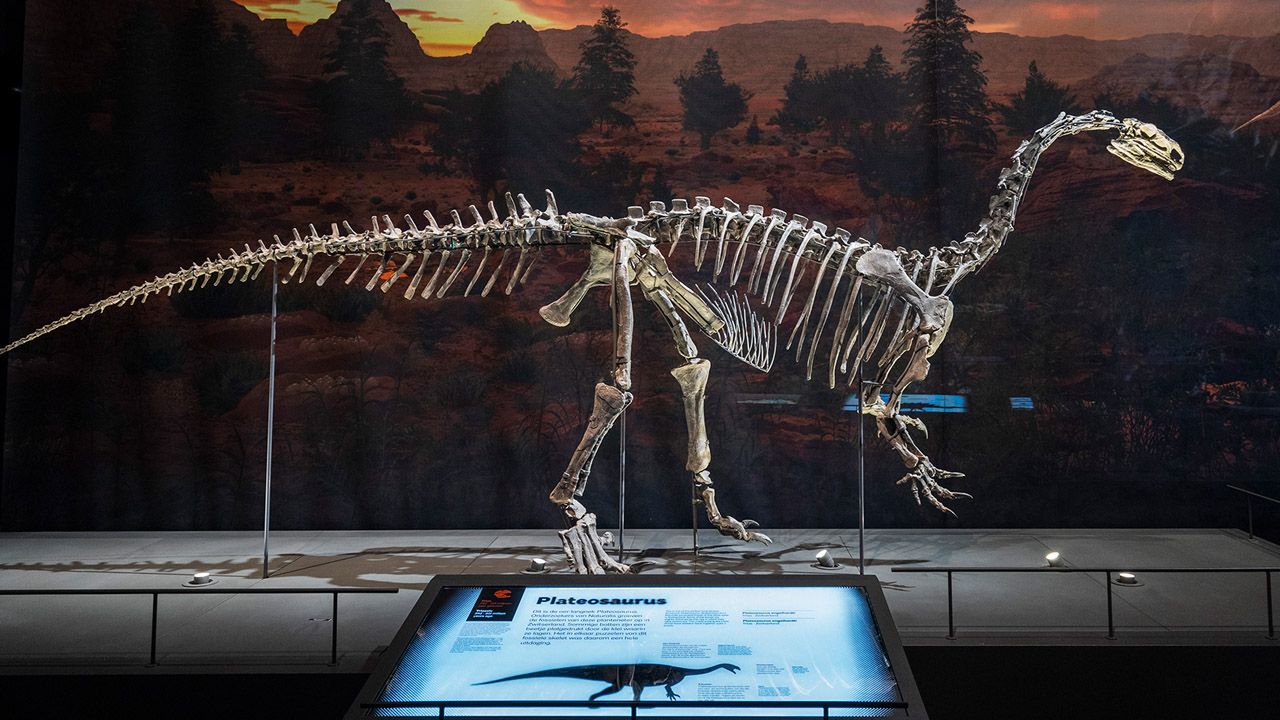According to scientists, Plateosaurus, one of the largest herbivorous dinosaurs, took about seven breaths per minute, similar to modern rhinoceros. The co-author of the study is Dr. Justyna Słowiak-Morkovina of the Institute of Paleontology of the Polish Academy of Sciences.
Plateosaurus trossingensis is one of the largest herbivorous dinosaurs of the late Triassic period, whose numerous remains, including complete skeletons, are known from Europe. Thanks to this good fossil record, it is possible to estimate the growth curve, body weight, and even the tidal volume of this dinosaur.
“In the body of animals, a series of chemical reactions must occur in order to produce the energy needed for life. The sum of these transformations is called metabolism. The rate at which an animal produces energy (metabolic rate) is constant for vertebrates (including dinosaurs) and is calculated using data on how weight changes animal with age. Thanks to this, we can find out the rate at which the animal consumes oxygen– describes Dr. Justyna Słowiak-Morkovina of the Institute of Paleontology of the Polish Academy of Sciences.
How do you calculate the weight of an extinct animal?
Previously, scientists calculated it based on measurements from the femur. However, paleontologists are now creating 3D models of dinosaur bodies based on complete skeletons, allowing for a more accurate estimate of dinosaur mass. Moreover, such models can also estimate the tidal volume of a test animal.” notes dr. Slowiak-Morkovina.
This type of modeling was done for Plateosaurus.
Humpback whales stop singing. It is about fighting for females
Australian scientists report that male humpback whales, that is, ocean humpback whales, abandon their mating songs in favor of fighting for mates…
See more
Another challenge was analyzing how the animal’s weight changed over time. To do this, the researchers scanned a cross-section across the femur and counted the lines of stunted growth.
“Such structures appear on the cross-section of the bones in the season when food is scarce, for example in ungulates in winter, so it is estimated that the stunted growth lines indicate the end of the year” – explains the researcher.
The combination of the passage of years and the calculation of body weight shows how body weight increases with the age of the animal.
“This allows us to calculate how much energy a pletosaurus needed to grow at this rate. And these data, in turn, made it possible to calculate how quickly oxygen was consumed during metabolism, ”- describes Dr. Sowiak-Morkovina.
How did dinosaurs breathe?
Another problem to be solved was how the dinosaur breathed. For example, birds have air sacs that allow them to breathe more efficiently (oxygen flows through the lungs when inhaling and exhaling); The mechanism is called double breathing.
“We don’t know if Plateosaurus had air sacs, but crocodilians could also respire doubly even though they lacked air sacs. Since non-avian dinosaurs (including Plateosaurus) fall between crocodilians and birds on the phylogenetic tree, we hypothesized that They also have this double breathing mechanism. This is also indicated by the research of other scientists published earlierJ “- explains the researcher.
The worm may explain the role of the gut in Parkinson’s disease
By studying the nematode Caenorhabditis elegans, scientists want to test the theory that Parkinson’s disease begins in the gut…
See more
The next step was to study the amount of oxygen the animal breathed.
“The efficiency of extracting oxygen from the air in an emu in the temperature range in which Plateosaurus lived is 24, plus minus 2.5 percent. Assuming that Plateosaurus was similar, we can calculate how much oxygen it must have inhaled; Thanks to data on the amount of oxygen in the atmosphere in the late Triassic period and the volume of tides, we counted the number of Breaths of Plateosaurus” – describes Dr. Słowiak-Morkovina.
To calculate the respiration rate as accurately as possible, the researchers chose a specific 3D model of Plateosaurus trossingensis – with a body weight of 693 kg and a tidal volume of 2,000 (+/- 500) cm3. The animal’s metabolism and oxygen demand were calculated. The oxygen content of the atmosphere in the late Triassic period, the time when Platerosaurus lived, was also taken into account.
Taking into account the amount of air it exhales each minute and knowing the tidal volume, it can be calculated that Plateosaurus took about 7 (+/- 3) breaths per minute. “This is similar to a modern rhinoceros. For comparison, the resting respiratory rate in humans is 12-15 breaths per minute, ”the researcher notes.
The results of these studies can be used in practice in our time. “The full picture of the physiological response of animals to environmental and ecological changes in the geological past may have an impact on future strategies to protect biodiversity in times of global climate change” – notes Dr. Słowiak-Morkovina.
door
# dinosaurs
# Scientists
#Sciences
# the exams
#Discovery

Echo Richards embodies a personality that is a delightful contradiction: a humble musicaholic who never brags about her expansive knowledge of both classic and contemporary tunes. Infuriatingly modest, one would never know from a mere conversation how deeply entrenched she is in the world of music. This passion seamlessly translates into her problem-solving skills, with Echo often drawing inspiration from melodies and rhythms. A voracious reader, she dives deep into literature, using stories to influence her own hardcore writing. Her spirited advocacy for alcohol isn’t about mere indulgence, but about celebrating life’s poignant moments.












